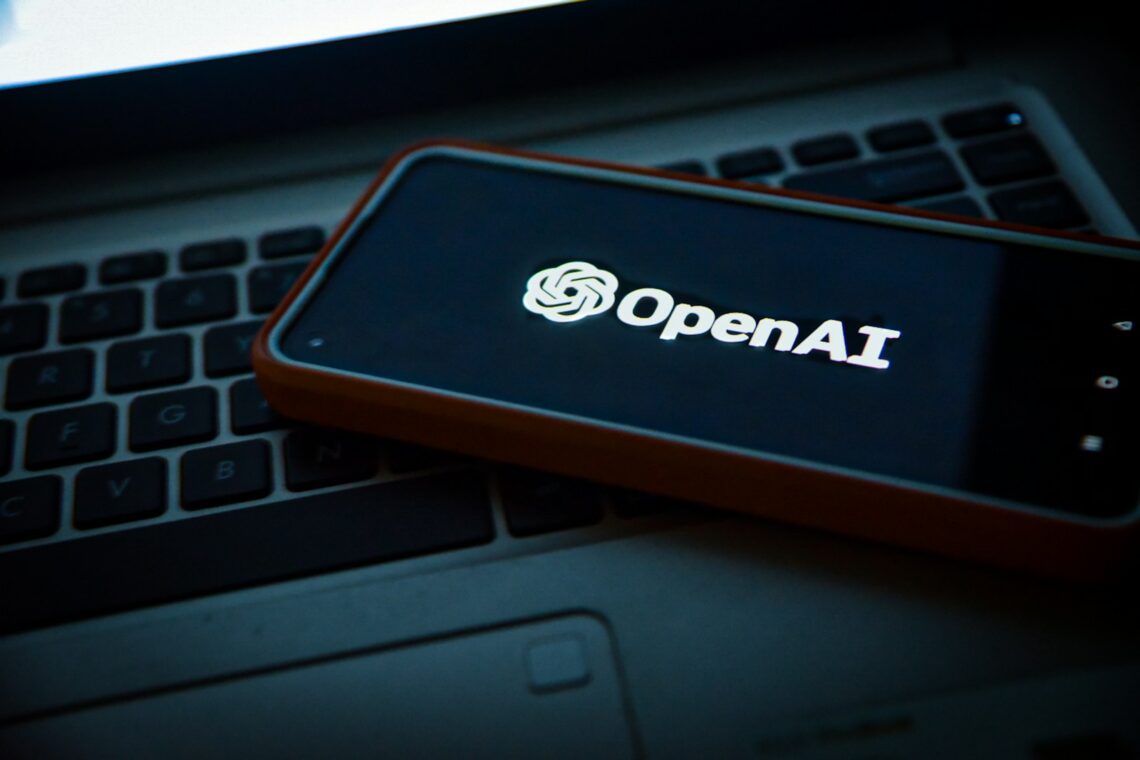Ever felt that tiny knot of dread in your stomach? The one that appears when you’re staring at a blank page, a deadline is screaming your name, and the perfect words just refuse to show up.
Yeah, me too.
For years, that was a regular part of my life as a freelance copywriter. But a few months ago, something shifted. I landed a project, revamped a client’s entire website copy, and pocketed a cool $600—all faster than I ever thought possible.
My secret weapon? It wasn’t a fancy new software or a team of junior writers. It was ChatGPT.
Now, before you close this tab thinking, “Oh great, another AI guru,” stick with me. I’m not here to tell you that robots are taking over. I’m here to show you how I use ChatGPT as a super-powered assistant, a creative partner that helps me do better work, faster.
And I’m going to share my exact, step-by-step workflow with you. The same one that led to my $600 win. Sound good?
The Elephant in the Room: Is AI Going to Steal Our Jobs?
Let’s get this out of the way. The fear is real. Every other LinkedIn post seems to be about how AI will make writers obsolete.
I’ll be honest, I was skeptical at first, too. But here’s the truth I’ve learned: AI is a tool, not a replacement.
Think of it like this: A master chef uses a food processor. Does that make them less of a chef? Of course not. It just handles the tedious chopping so they can focus on what really matters—flavor combinations, plating, and creating a masterpiece.
That’s what ChatGPT copywriting is all about. It’s our food processor. It can chop up ideas, spit out rough drafts, and help us overcome that initial blank-page paralysis. But the real magic—the strategy, the empathy, the understanding of a client’s soul, and the unique voice that makes copy sing—that still comes from you.
You are the pilot. AI is just the very smart co-pilot handling the autopilot on a long flight.
The $600 Client Win: A Quick Story

Okay, story time. I got a message from a small e-commerce brand that sells these amazing, sustainable pet toys. They were passionate about their products, but their website copy was… well, a little boring. It was dry, full of features, and didn’t capture the joy and fun of playing with a pet.
The Challenge: They needed fresh, engaging copy for five key product pages and their homepage. And, the classic freelance hurdle, they needed it by the end of the week.
My old self would have either quoted a sky-high rush fee or chugged coffee for three sleepless nights.
The “Aha!” Moment: This time, I decided to lean on my AI co-pilot. Instead of starting from scratch, I decided to use ChatGPT to accelerate my research and drafting process.
The Result: I delivered a full set of vibrant, benefit-driven, on-brand copy in just two days. The client was floored. They loved the new voice and felt it finally matched their brand’s personality. The $600 invoice was paid the same day.
This wasn’t about letting AI do the work. It was about using AI to do my work better and more efficiently. And you can, too.
My 5-Step ChatGPT Copywriting Workflow (The Part You’re Here For)
Ready to see how the magic happens? This is the exact framework I use. Feel free to steal it, adapt it, and make it your own.
Step 1: The Deep Dive & Briefing Your AI Assistant
This is the most important step, and it’s the one most people skip. You can’t just type “write a product description” and expect gold. Remember: garbage in, garbage out.
Before I even open ChatGPT, I do my homework and gather all the essential ingredients. It’s like a chef doing their *mise en place*—getting everything prepped and ready.
Here’s what I collect in a simple document:
- Target Audience: Who are we talking to? What are their biggest problems (e.g., “my dog destroys every toy”)? What are their deepest desires (e.g., “I want to feel like a great pet parent”)? I get specific. Example: “Millennial dog owners, aged 25-40, who view their pet as family and prioritize eco-friendly products.”
- Brand Voice & Tone: How should the brand sound? I use 3-5 keywords. Example: “Playful, witty, trustworthy, and a little bit quirky.”
- Product/Service Details: I list out the features (what it is) and, more importantly, the benefits (what it does for the customer).
- Feature: Made from durable, non-toxic rubber.
- Benefit: Peace of mind knowing your furry friend is safe, and you won’t have to buy a new toy next week.
- The Goal: What is the one thing we want the reader to do after reading this copy? Example: “Click the ‘Add to Cart’ button.”
- Keywords: I list any SEO keywords the client wants me to include.
By doing this, I’m not just prompting an AI. I’m creating a comprehensive creative brief for my new digital assistant.
Step 2: Crafting the “Master Prompt”
Now we’re ready to talk to the machine. A great prompt is the difference between getting generic fluff and a genuinely useful starting point.
My prompts are long and detailed. They follow a simple formula: Role + Context + Task + Constraints.
Here’s a template you can adapt:
“Act as an expert direct-response copywriter with 10 years of experience writing for beloved e-commerce brands.
[This is the ROLE]
I am writing a product description for a new dog toy called the ‘EverChew Ball.’
My target audience is millennial dog owners (25-40) who see their pets as family. They care about sustainability and product safety. Their main pain point is buying expensive toys that their dogs destroy in minutes.
The brand voice is playful, witty, and trustworthy. We want to sound like a knowledgeable friend, not a big corporation.
[This is the CONTEXT]
Your task is to write three different versions of a product description for the EverChew Ball. Each version should be around 150 words.
Please structure the copy using the AIDA (Attention, Interest, Desire, Action) formula. Focus on the benefits of durability (saving money) and safety (peace of mind).
[This is the TASK]
Do not use corporate jargon. Avoid clichés like ‘game-changer’ or ‘revolutionary.’ Ensure the tone remains conversational and fun throughout. Please include the keyword ‘durable dog toy’ at least once in each description.
[These are the CONSTRAINTS]”
See how specific that is? I’m giving ChatGPT everything it needs to succeed.
Step 3: Generation & Iteration (The Fun Part)
I hit “Enter” and watch as ChatGPT spits out a few drafts.
Are they perfect? Almost never. But they are a fantastic starting point. They save me from the agony of the blank page. Now, instead of being a writer, I get to be an editor and a director.
The real power lies in the follow-up conversation. I treat it like a brainstorming session with a junior writer.
- “I like version 2, but can you make the headline shorter and punchier?”
- “Give me 5 alternative opening lines for version 1.”
- “Rewrite this from the perspective of a dog who is begging its owner for this toy.” (This is great for getting creative!)
- “Can you make the call to action more urgent?”
This back-and-forth is where you can really refine the raw material. It’s a dance between your strategic direction and the AI’s rapid generation capabilities. This part of the ai freelance journey is what separates the pros from the amateurs.
Step 4: The Human Touch – Editing & Polishing
This is where you truly earn your money. Do not copy and paste directly from ChatGPT and send it to a client. Ever.
The AI-generated text is the clay. You are the sculptor. Now it’s time to shape it into a work of art.
I open a fresh document and start weaving together the best parts of the AI’s output with my own writing. Here’s my checklist:
- Inject Emotion: AI is good with facts but struggles with feelings. I add words and phrases that tap into the customer’s real emotions—their frustrations, hopes, and joys.
- Check the Flow: I read everything out loud. Does it sound like a real person talking? Is the rhythm right? I smooth out clunky sentences and awkward phrasing.
- Fact-Check Everything: AI can sometimes make stuff up, a phenomenon called “hallucinating.” I double-check every claim, feature, and statistic.
- Perfect the Brand Voice: I ensure every single word aligns with the brand’s unique personality. This is a subtle skill that AI can’t fully replicate.
- Add Storytelling: Can I add a quick sentence that paints a picture? Instead of “This toy is durable,” I might write, “Say goodbye to the toy graveyard under your couch.”
This manual, human-centric step transforms the good-enough AI draft into a great, client-ready piece of copy.
Step 5: Delivering the Final Product (and Getting Paid!)
When I present the work to the client, I don’t mention that I used AI. Why? Because it doesn’t matter.
They didn’t hire an AI. They hired me—my brain, my strategy, my editing skills, and my understanding of their business. ChatGPT was simply a tool in my toolbox that helped me deliver an excellent result ahead of schedule.
The value I provided was a strategic solution to their problem, and that’s what they happily paid for.
Pro Tips for Making Money with AI as a Freelance Copywriter
Want to take this even further? The world of money with ai is just getting started for writers. Here are a few new services you can offer, powered by your AI skills:
- Offer “AI-Powered Copy Audits”: Use ChatGPT to quickly analyze a client’s existing copy and provide a detailed report with suggestions for improvement.
- Become a Content Idea Machine: Use AI to brainstorm a year’s worth of blog post titles, social media hooks, and video ideas for a client in a single afternoon.
- Specialize in Prompt Engineering: Position yourself as an expert who can create custom “master prompts” for a company’s marketing team to use, saving them hours.
- Create High-Volume Content Fast: Use your workflow to efficiently write SEO articles, social media captions, or email sequences, allowing you to take on more clients.
The key is to position yourself as an AI-augmented strategist, not a cheap AI writer. Your value is in guiding the tool, not just pressing a button.
Are You Ready to Work Smarter, Not Harder?
Look, ChatGPT and other AI tools aren’t a passing fad. They are a fundamental shift in how we work. You can either fear it and get left behind, or you can learn to harness its power to become a more efficient, more creative, and more profitable copywriter.
By embracing ChatGPT for copywriting, I’m not just surviving in this new landscape—I’m thriving. I’m landing better clients, finishing projects faster, and feeling more creative than ever. And I’m definitely not pulling any more all-nighters.
So, what do you think? Are you ready to add a super-powered assistant to your team?
Let me know in the comments: What’s one way you’ve used (or considered using) AI in your freelance work?

